Aggressive players in pickleball know that mastering the volley is key to dominating the court. It’s not just about power; it’s about precision, speed, and the ability to catch your opponent off guard. The right volley technique can turn the tide of any game, making it an essential skill for those looking to play offensively.
But what makes a volley technique effective for an aggressive player? It’s all about the blend of agility, foresight, and the sheer will to keep the pressure on. Whether you’re a seasoned player aiming to refine your game or a newcomer with a penchant for the offensive, understanding these techniques can elevate your play. Let’s dive into the world of pickleball volleys, where aggression meets control in a thrilling dance of strategy and skill.
Mastering the Basic Volley
In pickleball, mastering the basic volley is crucial for players who favor an aggressive style of play. This foundational skill allows them to maintain control of the game by keeping their opponents on the defensive. When executed properly, a volley can significantly enhance a player’s ability to apply pressure and seize opportunities to win points.
The first step in mastering the basic volley is adopting the right stance. Players should stand with their knees slightly bent and their weight evenly distributed on the balls of their feet. This posture ensures they are ready to move in any direction quickly. Holding the paddle in front of the body, with the arm slightly bent, allows for swift and precise movements.
Developing Quick Reflexes
Aggressive players depend on their ability to react quickly to their opponent’s shots. To improve reflexes for the volley, they should practice drills that focus on speed and hand-eye coordination. One effective exercise involves a partner hitting soft volleys at varying angles, forcing the player to adjust their position and paddle orientation rapidly.
Fine-Tuning Paddle Control
Paddle control is paramount when volleying. Players must learn to manipulate the angle of the paddle face at the moment of contact to direct the ball with accuracy. A slight forward push at the point of impact can add speed to the volley, making it more challenging for opponents to return. However, the key is precision rather than power; the goal is to place the ball where the opponent isn’t.
Anticipating the Opponent’s Moves
For aggressive players, anticipating the opponent’s next move is a game-changer. Understanding common shot patterns and observing an opponent’s body language can give clues about where the next shot might land. This foresight allows players to position themselves advantageously, ready to execute a sharp volley.
Engaging in Strategic Targeting
Strategic targeting involves choosing the most effective areas to direct the volley. Typically, aiming for the opponent’s feet or open court spaces can compel them to hit a weaker return. By consistently applying this strategy, players can keep the pressure high and dictate the pace of the game.
Practice Makes Perfect
Implementing these techniques requires consistent practice. Players should incorporate volley drills into their training routine, focusing on movement, paddle control, and shot placement. Playing against opponents with varied styles also helps enhance one’s ability to adapt and apply the basic volley in different game situations.
Utilizing the Punch Volley
The punch volley in pickleball is an essential tool for aggressive players who want to dominate their games. Unlike the soft, finessed shots that might give opponents time to recover, a punch volley delivers speed and power, making it harder for opponents to return the ball. This technique, when mastered, can significantly elevate an aggressive player’s game, keeping the opponent on their toes and under constant pressure.
To execute a punch volley effectively, players must focus on their stance and paddle readiness. Having a low center of gravity and knees slightly bent prepares the body to react swiftly. The paddle should be held out in front, with the player ready to strike the ball in a forward motion. The grip on the paddle should be firm yet comfortable, allowing for quick adjustments and control over the ball’s direction.
Key Components of a Punch Volley
- Paddle Positioning: The paddle should be perpendicular to the ground, ensuring a flat surface for the ball to rebound off swiftly.
- Body Alignment: Players should face the net, with their shoulders aligned with their intended target. This posture ensures maximum power is transferred to the ball.
- Swift Execution: Instead of a full swing, the punch volley requires a short, sharp jab. This motion propels the ball rapidly across the net, leaving little time for opponents to react.
Practice Makes Perfect
Incorporating the punch volley into practice sessions is critical for those who aim to use it effectively during matches. Drills should focus on reaction time and accuracy, with players working on hitting targets placed in different areas of the court. Partners can feed balls at varying speeds and directions, simulating real-game scenarios where quick reflexes and precise targeting are crucial.
Strategic Targeting
Aggressive players can use the punch volley not just for its power but also as a strategic tool. Aim for areas of the court that are difficult for the opponent to reach, such as their backhand side or near their feet. By varying the targets and combining punch volleys with other shots, players can keep their opponents guessing and off-balance.
The punch volley is more than just a powerful shot; it’s a statement of intent. It tells the opponent that they’re in for a relentless, high-energy match. However, it’s important to remember that power should not come at the expense of accuracy. Players should focus on controlled aggression, using the punch volley judiciously to capitalize on the right moments.
Perfecting the Angle Volley
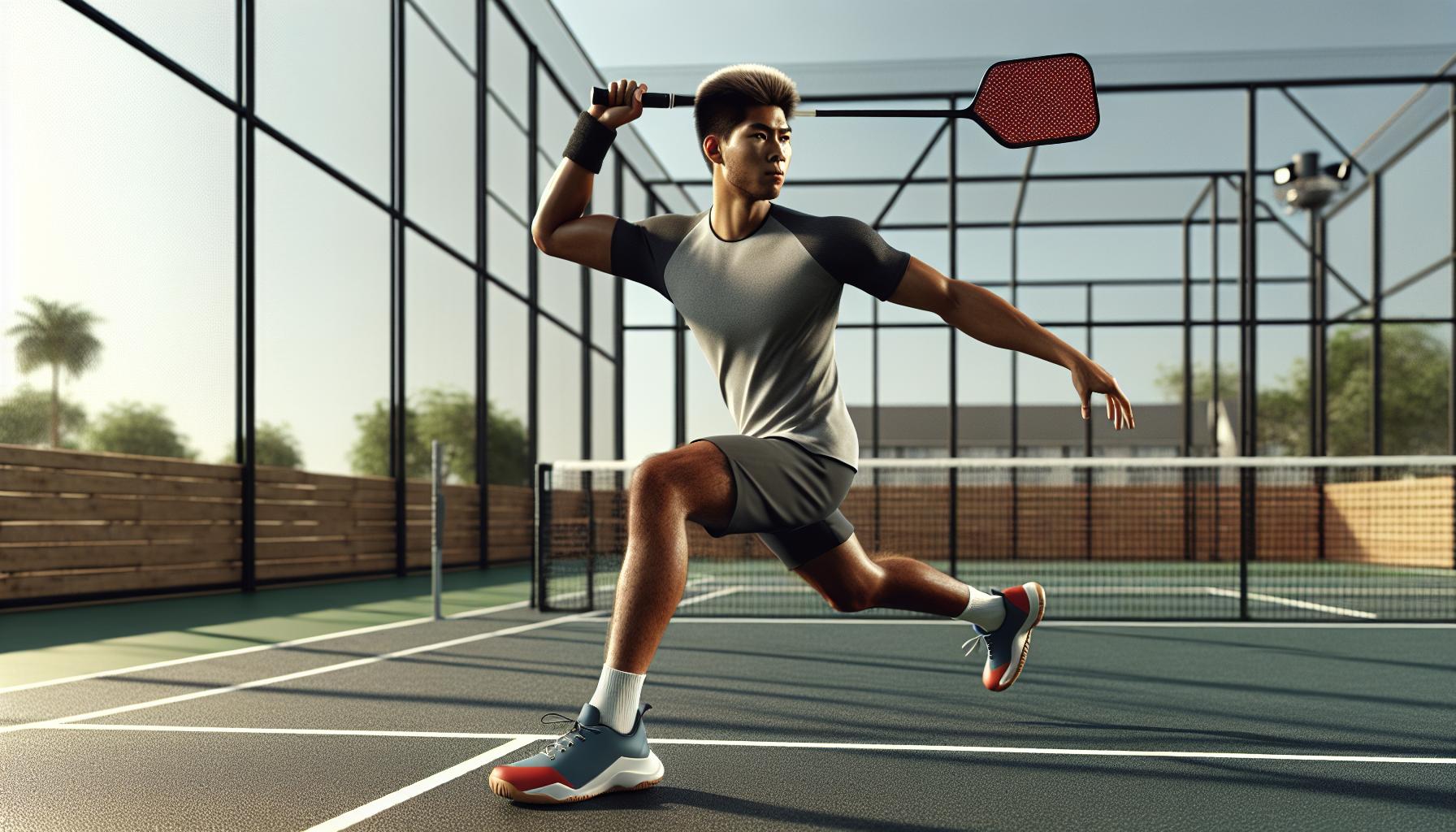
Following the mastery of the punch volley, aggressive pickleball players often turn their attention to perfecting the angle volley. This technique is critical for those looking to add an element of unpredictability to their game. The angle volley, when executed correctly, can be a game-changer, forcing opponents to cover more of the court and often catching them off-guard.
To begin with, the stance for an angle volley differs slightly from a standard volley stance. Players need to position themselves in a way that allows for quick, lateral movements. Agility is key here as the ability to shift direction swiftly can make or break the execution of a successful angle volley.
Footwork and paddle positioning work hand in hand to create the perfect angle. Players should practice stepping into the volley with the foot closest to the incoming ball, as this allows for maximum reach and control. The paddle should then be angled appropriately – not too steep to avoid launching the ball too high and not too flat to prevent it from going straight to the opponent. It’s all about finding that sweet spot that sends the ball just over the net but lands it where it’s most difficult for the opponent to retrieve.
Drilling is crucial when it comes to the angle volley. Specific drills can help players get accustomed to the quick shifts in stance and paddle position needed for this shot. One effective drill involves a partner hitting balls at different angles to the player, who then works on redirecting these balls at sharp angles across the net. This not only improves the player’s reaction time but also their ability to judge the angle and force needed for each shot.
Beyond the physical technique, strategic thinking plays a significant role in the successful execution of an angle volley. Aggressive players must be adept at reading their opponents’ positions and movements. The best time to execute an angle volley is when the opponent is either too far back or too close to the net, exploiting gaps in their defense. Additionally, keeping a variety of shots in play, including the punch volley and standard volley, ensures that opponents remain on their toes, making the angle volley more effective when it is used.
- Positioning and footwork are as important as the shot itself.
- **
Exploiting the Soft Volley
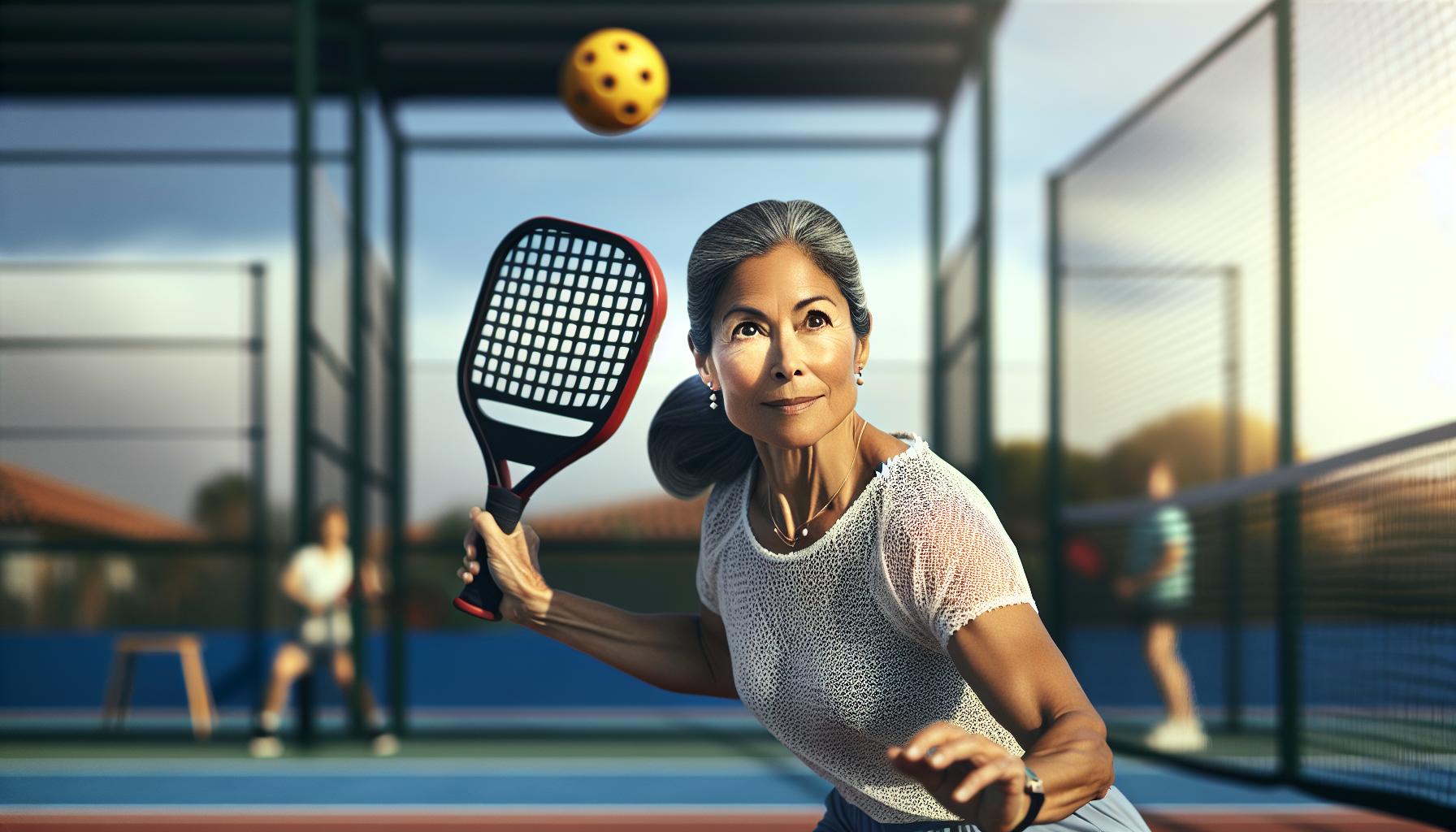
In the dynamic world of pickleball, mastering the soft volley is akin to having a secret weapon in one’s arsenal, especially for aggressive players. Unlike the more common power-driven shots, the soft volley offers a way to introduce finesse into the game, creating opportunities for strategic placement that can leave opponents scrambling. By integrating the soft volley into their gameplay, aggressive players can exploit moments when a softer touch is more beneficial than outright power.
The art of the soft volley isn’t just about reducing the strength behind the shot; it’s about precision, control, and timing. Players must gauge the perfect moment when a softer approach will catch their opponent off guard, often when the opponent is positioned deeper in the court, expecting a harder hit. Here, the objective is to drop the ball just over the net, making it difficult for the opponent to return with force.
To execute a successful soft volley, players should focus on several key points:
- Paddle Angle: The angle of the paddle is critical. A slightly upward tilt can provide the necessary loft to softly drop the ball over the net.
- Body Positioning: Staying balanced and ready, with knees slightly bent and eyes on the ball, allows for better control and execution of the soft touch.
- Reduced Swing: Unlike the punch volley, the soft volley requires a minimal backswing. The movement is more of a gentle push than a hit, using the paddle’s face to guide the ball’s trajectory.
Practicing the soft volley involves drills that focus on touch and accuracy rather than power. Players should work on hitting the ball softly but accurately across different parts of the net to become adept at placing the ball where they intend, regardless of the court dynamics. One effective drill is to partner up and exchange soft volleys, aiming to keep the ball in play and targeting specific areas within the kitchen to improve precision.
Furthermore, when used in combination with the punch and angle volleys, the soft volley becomes a strategic play that keeps opponents guessing. By varying the shots, players can create a rhythm that disrupts the opponent’s expectations and opens up the court for unexpected placements. This versatility in shot selection is what elevates a player’s game and makes them unpredictable and formidable on the court.
Incorporating the Fake Volley
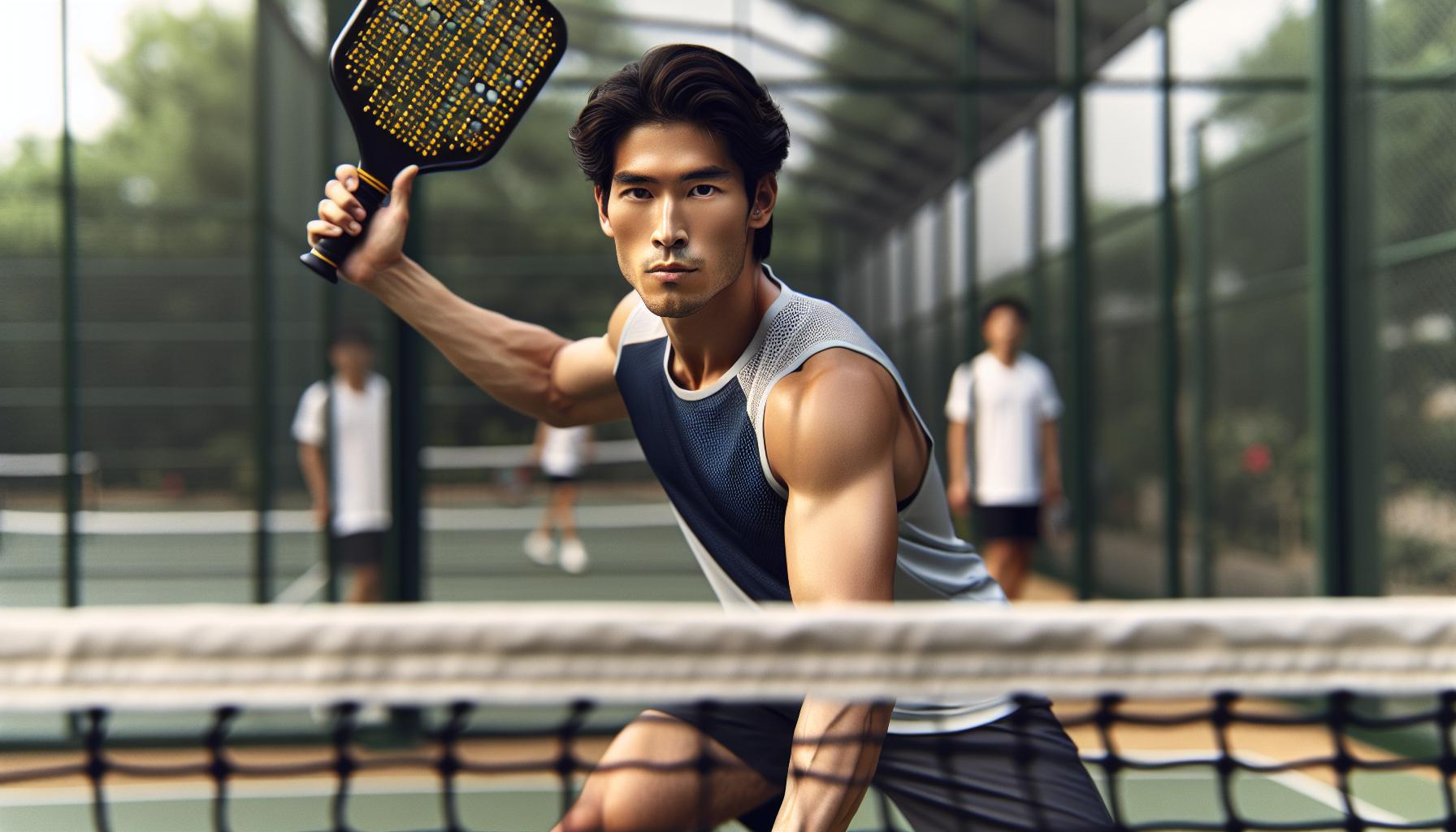
Another pivotal technique that aggressive players should incorporate into their game is the fake volley. This maneuver not only confuses opponents but also creates significant openings for scoring. The essence of the fake volley lies in its ability to make the opponent anticipate a powerful strike when, in reality, the player either softens the touch at the last moment or changes the direction of the shot entirely.
The execution of a successful fake volley begins with paddle positioning and body language. Aggressive players must master the art of disguising their intentions until the last possible moment. This involves maintaining a stance and grip that suggest a powerful volley is imminent, then swiftly altering the shot’s power or direction. The unexpected change throws opponents off balance, providing an opportunity to exploit their defenses.
Key Techniques for a Convincing Fake
- Paddle Control: Mastery over paddle movements is crucial. A slight twist of the wrist can dramatically change the direction of the ball.
- Eye Deception: Keeping eyes focused on the intended target area can mislead opponents, making the actual shot direction more deceptive.
- Swift Footwork: Quick lateral movements enhance the ability to execute fake volleys from various court positions, making it harder for opponents to predict the play.
Incorporating the fake volley into one’s playing style requires not just skill but also a keen sense of observation. Aggressive players must be adept at reading their opponents’ movements and predicting their reactions. This involves studying opponents during the match to identify patterns in their response to volleys and then strategically using fake volleys to exploit these tendencies.
Practice Drills for the Fake Volley
To effectively incorporate the fake volley into gameplay, players should engage in specific drills designed to enhance their deception skills. Drills that focus on paddle control and quick changes in shot direction are particularly beneficial. Additionally, practicing against an opponent or a coach who provides real-time feedback can help refine the technique and make it more convincing during actual play.
- Shadow Playing: Mimicking volley motions without hitting the ball to enhance control over shot feints.
- Target Hitting with Variation: Aiming for specific court areas while randomly incorporating fake shots to improve precision and unpredictability.
Conclusion
Mastering the art of the volley in pickleball can significantly elevate an aggressive player’s game. With a focus on not just power but precision and speed, the techniques discussed offer a comprehensive approach to dominating the net. The fake volley, in particular, stands out as a game-changer. It’s all about the subtlety of the play and the strategic deception that can catch opponents off guard. Remember, it’s the finesse in the execution of these volleys, coupled with relentless practice, that will truly make a difference. So, grab your paddle, hit the court, and start putting these techniques into action. The path to becoming a formidable force at the net is now in your hands.

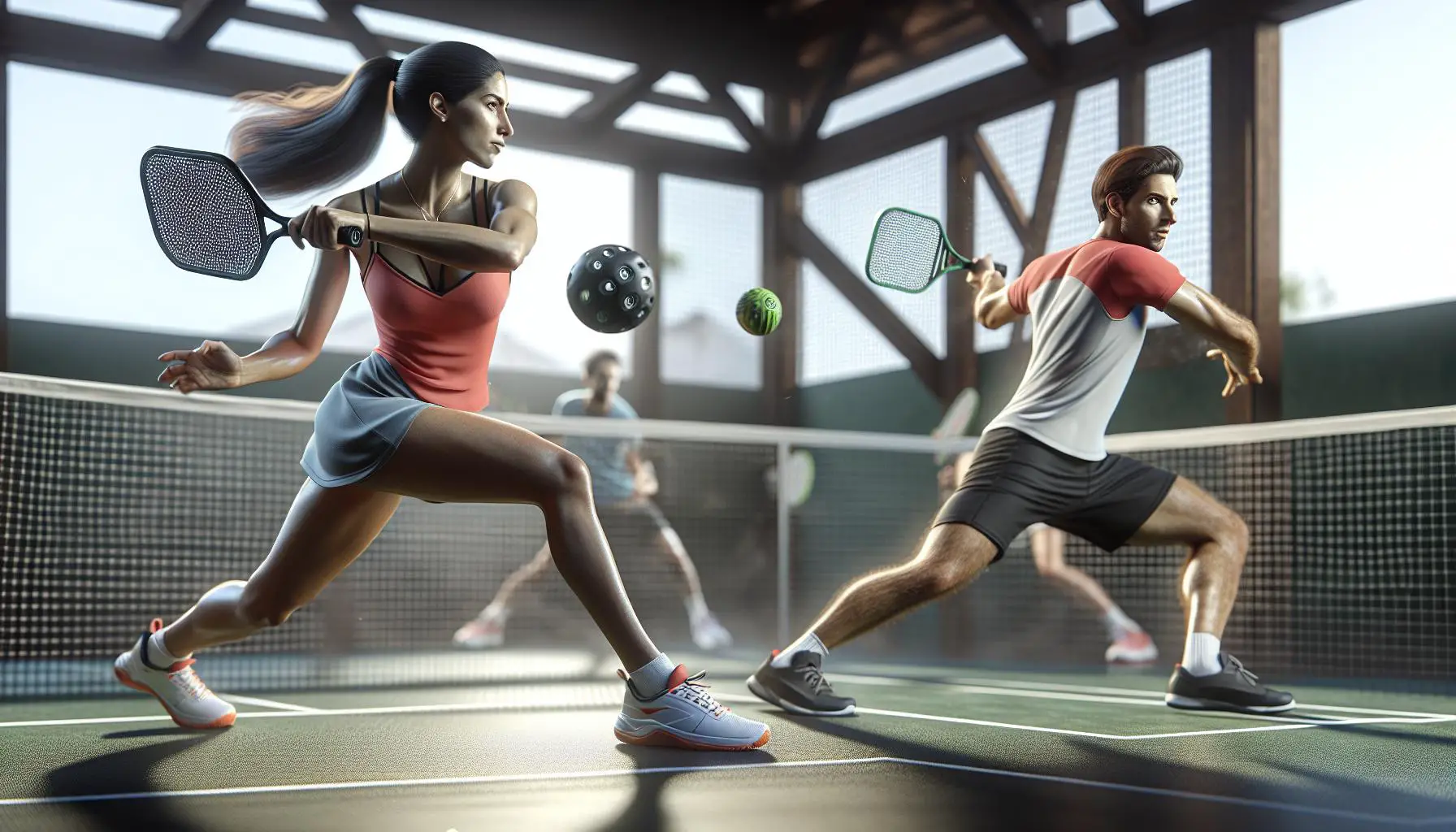









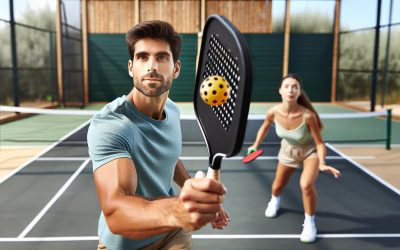


0 Comments